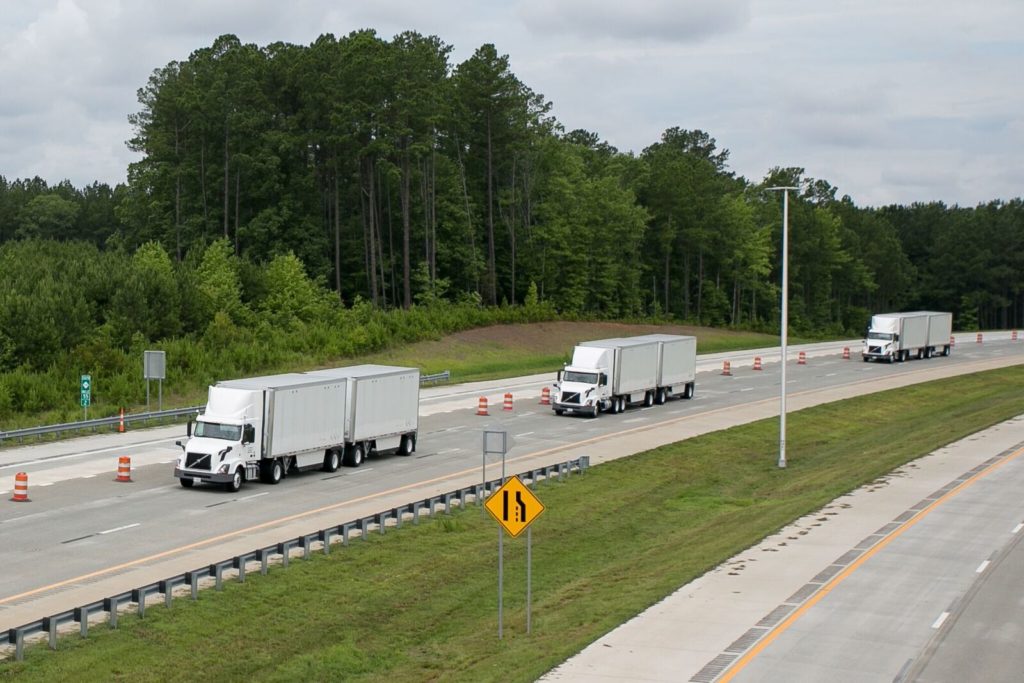FedEx and Volvo Trucks North America have successfully completed the first demonstration of autonomous truck platooning technology on a US highway.
Working closely with the North Carolina Turnpike Authority (NCTA), Volvo deployed three Volvo VNL tractors, each fitted with its Cooperative Adaptive Cruise Control (CACC) technology. The trucks were driven by professionally trained drivers and were hitched to double 28ft trailers.
Per Carlsson, acting president of Volvo Trucks North America, said, “Volvo Trucks has long supported platooning because it benefits freight companies and professional drivers alike through safer, more fuel-efficient operations.
“We continue preparing for deployment of trucks with greater vehicle-to-vehicle communication capabilities that support higher levels of advanced driver-assistance systems (ADAS). We know these technologies will be part of our future, but exact timing depends on many things, namely regulations, infrastructure, safety standards, and market demand.”
Through CACC, a wireless vehicle-to-vehicle (V2V) communication technology, the tractors and trailers remained in constant communication. The tractors and trailers traveled at speeds of up to 62mph while keeping a time gap of 1.5 seconds – a closer distance than what is typical for on-highway tractors. Staged and unplanned vehicle cut-ins demonstrated how the technology handles common traffic situations.
Since April 2018, three Volvo VNL tractors have been paired with various combinations of FedEx trailers to simulate real-world routes and trailer loads. Potential benefits of platooning include faster responses to hard braking while maintaining safety and fuel efficiency.
“FedEx was built on innovation and it continues to be an integral part of the FedEx culture and business strategy,” said Gloria Boyland, corporate vice president, operations and service support, FedEx Corporation.
“We are pleased to collaborate with Volvo Trucks and the NCTA to learn more about how platooning technology can benefit our team members while improving fuel efficiency for our fleet.”


